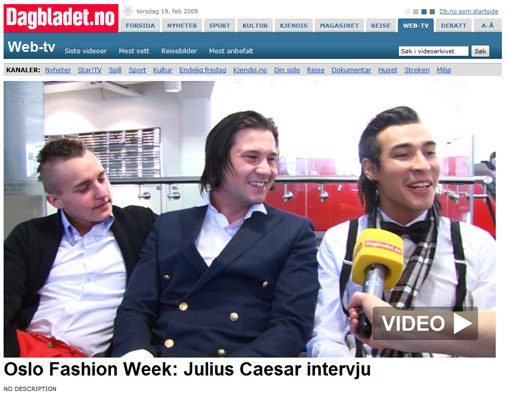
Here is a great post from last month that, judging by the paucity of comments and trackbacks, has gotten very little attention: it’s called “10 Steps to Save the Newspaper,” and it’s by Morten Rand-Hendriksen of Burnaby, British Columbia on his blog, Design Is Philosophy. As a matter of fact, everything on his blog (including the design of it) is terrific, but we journobloggers don’t seem to have discovered it yet.
So do me a favor. Subscribe to his blog. Follow him on Twitter.
Now, about his ten steps to save the newspaper: visit his blog to read all ten recommendations, but let me excerpt the ones I like particularly.
Predictably, like Juan Antonio Giner, Mario Garcia and Alan Jacobson, Rand-Hendriksen is a design evangelist — big, bold design. “The internet is a visual medium. So use it.”
One of the many great things about the internet is that real-estate is no longer a problem. Want to post a 6,000 word article on penguins with frostbite? Go ahead. Have a humongous graphic or image you want to show in all it’s splendor and detail? Just place it as a thumbnail in your page and link to the full size version.In short, when moving from print to online as your publishing medium your options in terms of visual content become limitless. So exploit it.
He points to some news sites following what he calls the Massive Image Overload strategy. See, for example, Aftenposten in Norway, and click through to any major story. It makes you wonder why the Boston Globe doesn’t integrate The Big Picture (see also Big Picture Notes) into its main news pages. When you compare the Globe, Times, Washington post or almost any North American newspaper site with almost any European one, it comes across pretty tame. Massive Image Overload could be a reader option, even, like Times Extra.
“Think Way Outside the Box” is another of Rand-Hendriksen’s ten strategies, by which he means, look for non-news businesses that you can integrate into your site. He illustrates it with the example of “The Weight Club”, offered by the Norwegian paper VG (whose site, to tell you the truth, may cross the line from bold design into Massive Information Overload):
As the title suggests it is a club you can join to get help loosing weight. By paying a small fee you get access to a closed site within the online newspaper that offers everything from calorie calculators to personal trainer advice, equipment and gym membership discounts, live chats with professional trainers, doctors and other health care providers and a massive support system consisting of other people in your situation.
The service also features success stories in the regular online and printed paper and publishes weekly articles and teasers for non-members to get them hooked.
The Weight Club has turned into a big success both for the paper and for the participants as a huge community has been built that shares recipes, advice, trials and tribulations with each other to achieve a healthier lifestyle and a better life in general.
Another of the ten tips: start a poetry contest, as was done at Dagbladet:
I don’t think even the creators realized just how big a poetry contest where the only prize was a feature article at the end of the month would take off quite as much as it has. Today not only do people submit tons of excellent poetry but the contest has breathed life into poetry as an art form in schools.
(In one of my incarnations as publisher, I persuaded my editor to start a Poetry Corner in the paper. We got a lot of bad poetry, some excellent poetry, we published it all, and it became a mighty popular feature. Decades ago, many U. S. newspapers ran a daily poem on the editorial page. Why not bring it back in an online format to engage readers? There are poets behind every tree up here in Vermont.)
Other suggestions from Rand-Hendriksen include “offer the reader a place to connect” (agreed — U. S. newspapers are just dabbling with social media and should just dive in) and “hook up with the experts” by working out cross-posting arrangements rather than relying on a journalist to interpret the subject (in other words, launch content-sharing not only with neighboring papers for local and regional news, but with sites covering all kinds of topics).
I’m looking forward to more commentary about news content and presentation from Rand-Hendriksen.